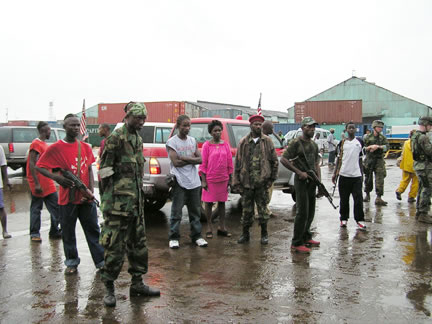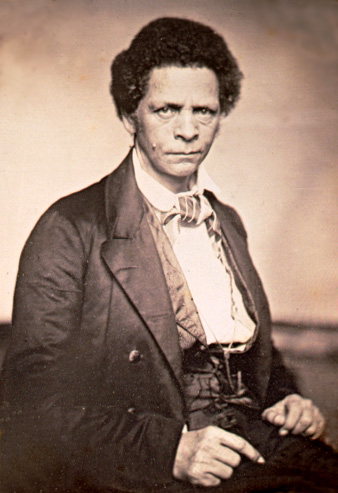|
RFDG Insurgency
The RFDG Insurgency was an insurgency in Guinea by the RFDG, a rebel group supported by Liberia and the Sierra Leone, Sierra Leonean rebel group Revolutionary United Front, RUF. The fighting was closely connected to the Second Liberian Civil War and the Sierra Leone Civil War and primarily occurred on Guinea's borders with Liberia and Sierra Leone. Beginning in September 2000, some of the most intense fighting took place around the city of Guéckédou in December, before the level of violence decreased in 2001. Background In 1999, Guinea had 450,000 refugees from the First Liberian Civil War and the Sierra Leone Civil War, the highest number in Africa at the time. Most of these refugees lived near the borders with Sierra Leone and Liberia. While this border region was initially peaceful, in the late 1990s the Sierra Leonean rebel group Revolutionary United Front, RUF began to conduct cross border raids into Guinea. The start of the Second Liberian Civil War in 1999 lead to an i ... [...More Info...] [...Related Items...] OR: [Wikipedia] [Google] [Baidu] |
Guinea
Guinea ( ),, fuf, 𞤘𞤭𞤲𞤫, italic=no, Gine, wo, Gine, nqo, ߖߌ߬ߣߍ߫, bm, Gine officially the Republic of Guinea (french: République de Guinée), is a coastal country in West Africa. It borders the Atlantic Ocean to the west, Guinea-Bissau to the northwest, Senegal to the north, Mali to the northeast, Cote d'Ivoire to the southeast, and Sierra Leone and Liberia to the south. It is sometimes referred to as Guinea-Conakry after its capital Conakry, to distinguish it from other territories in the eponymous region such as Guinea-Bissau and Equatorial Guinea. It has a population of million and an area of . Formerly French Guinea, it achieved independence in 1958. It has a history of military coups d'état.Nicholas Bariyo & Benoit FauconMilitary Faction Stages Coup in Mineral-Rich Guinea ''Wall Street Journal'' (September 5, 2021).Krista LarsonEXPLAINER: Why is history repeating itself in Guinea's coup? Associated Press (September 7, 2021).Danielle PaquettH ... [...More Info...] [...Related Items...] OR: [Wikipedia] [Google] [Baidu] |
President Of Liberia
The president of the Republic of Liberia is the head of state and government of Liberia. The president serves as the leader of the executive branch and as commander-in-chief of the Armed Forces of Liberia. Prior to the independence of Liberia in 1847, executive power in the Commonwealth of Liberia was held by the governor of Liberia, who was appointed by the American Colonization Society. The 1847 Constitution transferred the executive powers of the governorship to the presidency, which was largely modeled on the presidency of the United States. Between 1847 and 1980, the presidency was exclusively held by Americo-Liberians, the original American settlers of Liberia and their descendants. The original two-party system, with the Republican Party and the True Whig Party, ended in 1878, when the election of Anthony W. Gardiner marked the beginning of 102 years of one-party rule by the True Whigs. Following a ''coup d'état'' by disgruntled army officers led by Samuel Doe in ... [...More Info...] [...Related Items...] OR: [Wikipedia] [Google] [Baidu] |
Kissidougou
Kissidougou ( N’ko: ߞߛߌ߬ߘߎ߯; pronounced like Kiss-eh-dow-goo) is a city in southern Guinea. It is the capital of in the Kissidougou Prefecture. Following intensified conflicts in Sierra Leone and Liberia during the fall and winter of 2000, many people from the city of Guéckédou fled to Kissidougou and stayed. As of 2014 it had a population of 102,675 people. The town is served by Kissidougou Airport, and the Niandan river flows past the city. Kissidougou City Founded in the eighteenth century, the city is known for the coffee plantations and large expanses of nearby forest. Other attractions in the city include a museum, a football team and a major bridge. Although the market is open 7 days a week, it is especially busy on Tuesdays. The word ''Kissidougou'' means ''a place of refuge'' in Malinke, Kouranko alinke Sub-groupare the largest local ethnic group. The Guinean musician and singer Mory Kanté was from Kissidougou. Ethnicity Besides the dominant ... [...More Info...] [...Related Items...] OR: [Wikipedia] [Google] [Baidu] |
Guéckédou Prefecture
Guéckédou is a prefecture located in the Nzérékoré Region of Guinea. The capital is Guéckédou. The prefecture covers an area of 4,750 km.² and has a population of 290,611. Sub-prefectures The prefecture is divided administratively into 10 sub-prefectures: # Guéckédou-Centre # Bolodou # Fangamadou # Guendembou # Kassadou # Koundou # Nongoa Nongoa is a town and sub-prefecture in the Guéckédou Prefecture in the Nzérékoré Region The Nzérékoré Region ( nqo, ߒߛߙߍߜߍ߬ߘߍ߫ ߕߌ߲߬ߞߎߘߎ߲) is a region in the southern part of Guinea. Its capital and largest city ... # Ouéndé-Kénéma # Tekoulo # Termessadou-Dibo See also * Yinde-Millinou References Prefectures of Guinea Nzérékoré Region {{Guinea-geo-stub ... [...More Info...] [...Related Items...] OR: [Wikipedia] [Google] [Baidu] |
Forécariah
Forécariah (N’ko: ߝߏߙߋߞߊߙߌߦߊ߫) is a sub-prefecture and town located in western Guinea. It is the capital of Forécariah Prefecture. As of 2008, the population was estimated to be around 21,710. Famous people It was the birthplace of Henri Duparc, the film director. Mining Forecariah is a possible station on a heavy duty railway between Kalia mine and Matakong port for the export of iron ore. One of the mines is at Kalia. Ebola Ismail Ould Cheikh Ahmed, head of United Nations Mission for Ebola Emergency Response (UMEER) visited Forécariah in March 2015, concerned about the continuing large number of cases of Ebola. He called for closer collaboration between health services in Guinea and neighbouring Sierra Leone. This was in the context of three quarters of all Ebola cases worldwide being in the combined areas of Forécariah Prefecture and neighbouring Kambia District in Sierra Leone. See also * Railway stations in Guinea Railway stations in Gui ... [...More Info...] [...Related Items...] OR: [Wikipedia] [Google] [Baidu] |
UNHCR
The United Nations High Commissioner for Refugees (UNHCR) is a United Nations agency mandated to aid and protect refugees, forcibly displaced communities, and stateless people, and to assist in their voluntary repatriation, local integration or resettlement to a third country. It is headquartered in Geneva, Switzerland, with over 17,300 staff working in 135 countries. Background UNHCR was created in 1950 to address the refugee crisis that resulted from World War II. The 1951 Refugee Convention established the scope and legal framework of the agency's work, which initially focused on Europeans uprooted by the war. Beginning in the late 1950s, displacement caused by other conflicts, from the Hungarian Uprising to the decolonization of Africa and Asia, broadened the scope of UNHCR's operations. Commensurate with the 1967 Protocol to the Refugee Convention, which expanded the geographic and temporal scope of refugee assistance, UNHCR operated across the world, with the bu ... [...More Info...] [...Related Items...] OR: [Wikipedia] [Google] [Baidu] |
Macenta
Geography Macenta is the capital of the Macenta Prefecture in southeastern Guinea is located in the Guinea Highlands (at ) on the road from Nzérékoré to Guéckédou. The Nianda River joins the Makonda River near Macenta. Macenta is also located near the border of Liberia. Climate Macenta has a tropical monsoon climate (Köppen climate classification ''Am''). Recent history French colonial and settlement influx influenced by Liberians circa 2000. It is the source of the 2014 African Ebola outbreak. Economy Macenta is the major trading market town for tea, coffee, rice, cassava, shea butter extract, kola nuts, palm oil, and kernels grown nearby. A tea processing plant was built in Macenta in 1968, and the town has an agricultural research station, a sawmill, and several secondary schools. Retrieved on June ... [...More Info...] [...Related Items...] OR: [Wikipedia] [Google] [Baidu] |
Guinean Army
The Guinean Armed Forces (french: Forces armées guinéennes) are the armed forces of Guinea. They are responsible for the territorial security of Guinea's border and the defence of the country against external attack and aggression. Guinea's armed forces are divided into five branches – army, navy, air force, the paramilitary National Gendarmerie and the Republican Guard (Guinea), Republican Guard – whose chiefs report to the Chairman of the Joint Chiefs of Staff, who is subordinate to the Minister of Defense. In addition, regime security forces include the National Police Force (Sûreté National). The Gendarmerie, responsible for internal security, has a strength of several thousand, and is armed with military equipment. It is aided by the Republican Guard, which provides protection for government officials. History Upon independence in 1958, France cut all ties and immediately began to repatriate Guinean soldiers serving in the French Army. Of the about 22,000 Guinean sol ... [...More Info...] [...Related Items...] OR: [Wikipedia] [Google] [Baidu] |
Conakry
Conakry (; ; sus, Kɔnakiri; N’ko: ߞߐߣߊߞߙߌ߫, Fula: ''Konaakiri'' 𞤑𞤮𞤲𞤢𞥄𞤳𞤭𞤪𞤭) is the capital and largest city of Guinea. A port city, it serves as the economic, financial and cultural centre of Guinea. Its population as of the 2014 Guinea census was 1,660,973. The current population of Conakry is difficult to ascertain, although the U.S. Department of State's Bureau of African Affairs has estimated it at two million, accounting for one-sixth of the entire population of the country. History Conakry was originally settled on the small Tombo Island and later spread to the neighboring Kaloum Peninsula, a stretch of land wide. The city was essentially founded after Britain ceded the island to France in 1887. In 1885 the two island villages of Conakry and Boubinet had fewer than 500 inhabitants. Conakry became the capital of French Guinea in 1904 and prospered as an export port, particularly after a railway (now closed) to Kankan opened up t ... [...More Info...] [...Related Items...] OR: [Wikipedia] [Google] [Baidu] |
Pamelap
Pamelap is a town in Forécariah Prefecture, Kindia Region in the Republic of Guinea. Pamelap shares an international border with the town of Gbalamuya located in the Republic of Sierra Leone. Pamelap has a population about 20,000. Almost the entire population of Pamelap are a members of the Susu people, Susu ethnic group. The Susu language is widely spoken in Pamelap, and is the main language of communication in the town. The population of Pamelap is virtually all Muslim Muslims ( ar, المسلمون, , ) are people who adhere to Islam, a monotheistic religion belonging to the Abrahamic tradition. They consider the Quran, the foundational religious text of Islam, to be the verbatim word of the God of Abrah ..., and it is known for its conservative Muslim population. References Populated places in the Kindia Region {{Guinea-geo-stub ... [...More Info...] [...Related Items...] OR: [Wikipedia] [Google] [Baidu] |
Madina Woula
Madina Woula (also spelled Madina Oula) is a town in southern Guinea near the border with Sierra Leone. Transport It is a likely station on the proposed Transguinean Railways. See also * Transport in Guinea * Railway stations in Guinea Railway stations in Guinea include: Maps UNHCR Atlas Map (2004)shows topography. UN mapshows provinces; towns; railways ReliefWeb Map - Topography and RailReliefWeb Map - Population density and Roads - also shows line parameters * Interactive ... References Populated places in the Kindia Region {{Guinea-geo-stub ... [...More Info...] [...Related Items...] OR: [Wikipedia] [Google] [Baidu] |




